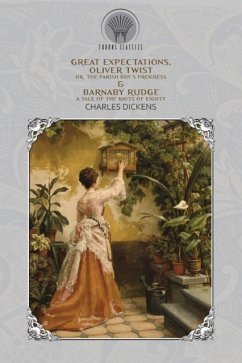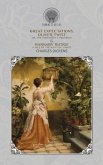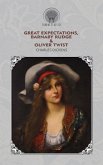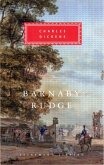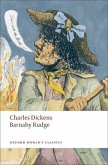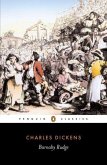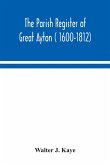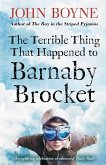On Christmas Eve, around 1812, Pip, an orphan who is about seven years old, encounters an escaped convict in the village churchyard, while visiting the graves of his parents and siblings. Pip now lives with his abusive elder sister and her kind husband Joe Gargery, a blacksmith. The convict scares Pip into stealing food and a file. Early on Christmas morning Pip returns with the file, a pie and brandy. During Christmas Dinner that evening, at the moment Pip's theft is about to be discovered, soldiers arrive and ask Joe to repair some shackles. Joe and Pip accompany them as they recapture the convict who is fighting with another escaped convict. The first convict confesses to stealing food from the smithy. A year or two later, Miss Havisham, a wealthy spinster who still wears her old wedding dress and lives as a recluse in the dilapidated Satis House, asks Mr Pumblechook, a relation of the Gargery's, to find a boy to visit her. Pip visits Miss Havisham and falls in love with her adopted daughter Estella. Estella remains aloof and hostile to Pip, which Miss Havisham encourages. Pip visits Miss Havisham regularly, until he is old enough to learn a trade. Joe accompanies Pip for the last visit, when she gives the money for Pip to be bound as apprentice blacksmith. Joe's surly assistant, Dolge Orlick, is envious of Pip and dislikes Mrs Joe. When Pip and Joe are away from the house, Mrs Joe is brutally attacked, leaving her unable to speak or do her work. Orlick is suspected of the attack. Mrs Joe becomes kind-hearted after the attack. Pip's former schoolmate Biddy joins the household to help with her care. The novel was originally published in monthly instalments in the magazine Bentley's Miscellany, from February 1837 to April 1839. It was originally intended to form part of Dickens's serial, The Mudfog Papers. George Cruikshank provided one steel etching per month to illustrate each instalment. The novel first appeared in book form six months before the initial serialisation was completed, in three volumes published by Richard Bentley, the owner of Bentley's Miscellany, under the author's pseudonym, "Boz". It included 24 steel-engraved plates by Cruikshank. Gathered around the fire at the Maypole Inn, in the village of Chigwell, on an evening of foul weather in the year 1775, are John Willet, proprietor of the Maypole, and his three cronies. One of the three, Solomon Daisy, tells an ill-kempt stranger at the inn a well-known local tale of the murder of Reuben Haredale which had occurred 22 years earlier on that very day. Reuben had been the owner of the Warren, a local estate which is now the residence of Geoffrey, the deceased Reuben's brother, and Geoffrey's niece, Reuben's daughter Emma Haredale. After the murder, Reuben's gardener and steward went missing and were suspects in the crime. A body was later found and identified as that of the steward, so the gardener was assumed to be the murderer. Joe Willet, son of the Maypole proprietor, quarrels with his father because John treats 20-year-old Joe as a child. Finally having had enough of this ill-treatment, Joe leaves the Maypole and goes for a soldier, stopping to say goodbye to the woman he loves, Dolly Varden, daughter of London locksmith Gabriel Varden. Meanwhile, Edward Chester is in love with Emma Haredale. Both Edward's father, John Chester, and Emma's uncle, the Catholic Geoffrey Haredale - these two are sworn enemies - oppose the union after Sir John untruthfully convinces Geoffrey that Edward's intentions are dishonourable. Sir John intends to marry Edward to a woman with a rich inheritance, to support John's expensive lifestyle and to pay off his debtors. Edward quarrels with his father and leaves home for the West Indies.
Hinweis: Dieser Artikel kann nur an eine deutsche Lieferadresse ausgeliefert werden.
Hinweis: Dieser Artikel kann nur an eine deutsche Lieferadresse ausgeliefert werden.

